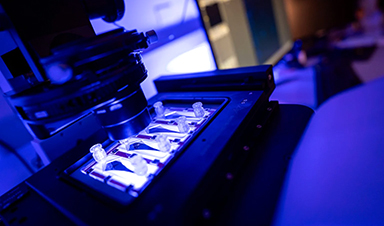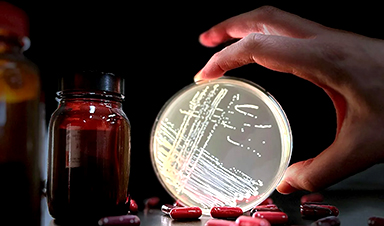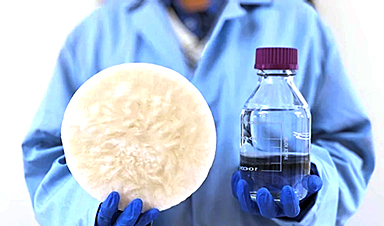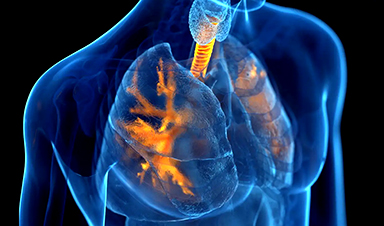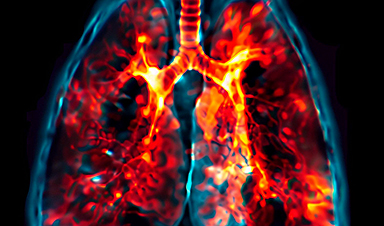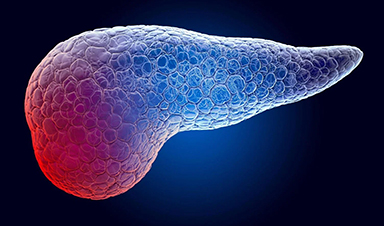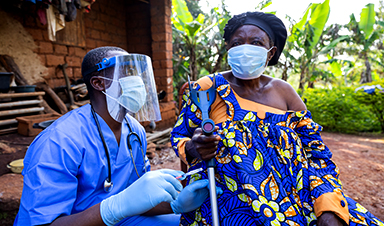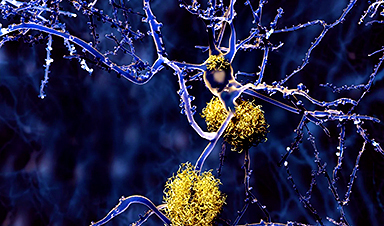Have a cough, sore throat and congestion? Any number of respiratory viruses could be responsible. Conventional tests can identify certain likely culprits by relying on chemical reactions, but some researchers want to swap chemistry for electrical changes sensed by nanomaterials. Today, scientists report using a single-atom-thick nanomaterial to build a device that can simultaneously detect the presence of the viruses that cause COVID-19 and the flu -; at much lower levels and much more quickly than conventional tests for either.
The researchers will present their results at the spring meeting of the American Chemical Society (ACS). ACS Spring 2023 is a hybrid meeting being held virtually and in-person March 26–30, and features more than 10,000 presentations on a wide range of science topics.
The symptoms of both flu and COVID-19 overlap considerably, making it difficult to distinguish between them, notes Deji Akinwande, Ph.D., who is presenting the work at the meeting.
When both of these viruses are circulating together as they did earlier this winter, it would be immensely useful to have a sensor that can simultaneously detect whether you have COVID, flu, none of the above or both.”
Deji Akinwande, Ph.D.
Akinwande, who is at The University of Texas at Austin, says that the device he and colleagues are developing could be modified to test for other infections as well.
The group, including Dmitry Kireev, Ph.D., a postdoc in Akinwande’s lab, constructed the COVID-19 and flu sensor using graphene, a single layer of carbon atoms arranged in a hexagonal lattice pattern. Its extreme thinness renders graphene highly sensitive to any electrical changes in its environment. Akinwande and other researchers see enormous potential in using it and other, similar nanomaterials to create sensors for many different applications.
“These ultra-thin nanomaterials generally hold the record for best sensitivity, even down to the detection of single atoms, and they can improve the ability to detect very small quantities of basically anything that needs to be sensed, whether it’s bacteria or viruses, in gas or in blood,” Akinwande says.
Previously, his group reported designing a graphene-based temporary tattoo that could monitor blood pressure. The tattoo consists of pairs of sensors placed along the arteries of the arm. One half of each pair sends out an electrical current that its partner detects. This signal is used to determine blood flow.
To build the infection sensor, the researchers had to make graphene respond to the presence of viral protein. To do so, they looked to the immune system, which produces antibodies that are fine-tuned to recognize and latch onto particular pathogens. The researchers linked antibodies against SARS-CoV-2, the virus that causes COVID-19, and against the flu virus to graphene. When a sample from an infected person is placed on the sensor, these antibodies bind to their target proteins, prompting a change in the electrical current.
The researchers did not have the safety facilities needed to use whole, active flu or SARS-CoV-2 viruses to test the roughly square-inch sensor. To substitute, they used proteins from these viruses delivered in fluid intended to resemble saliva. Their results indicated that not only could the sensor detect the presence of the proteins, it could do so when they were present at extremely low quantities. This sensitivity suggested the sensor could be used for detecting the much more sparse viral particles found in breath, Akinwande says.
The sensor also worked quickly, returning results within about 10 seconds of dropping in a sample, he says. By comparison, conventional COVID-19 tests can take minutes or hours, depending on the type, and a dual COVID and flu test recently authorized by the U.S. Food and Drug Administration takes about half an hour to produce results.
Akinwande and his group are working to improve its performance further, including by expanding the slate of viruses it can detect. With funding from the National Science Foundation, they are developing a sensor designed to test for SARS-CoV-2 variants, such as omicron and delta. While they are currently focusing on a two-variant design, the test could be adapted to simultaneously identify even more, they say.
News
Baffling Scientists for Centuries: New Study Unravels Mystery of Static Electricity
ISTA physicists demonstrate that contact electrification depends on the contact history of materials. For centuries, static electricity has intrigued and perplexed scientists. Now, researchers from the Waitukaitis group at the Institute of Science and [...]
Tumor “Stickiness” – Scientists Develop Potential New Way To Predict Cancer’s Spread
UC San Diego researchers have developed a device that predicts breast cancer aggressiveness by measuring tumor cell adhesion. Weakly adherent cells indicate a higher risk of metastasis, especially in early-stage DCIS. This innovation could [...]
Scientists Just Watched Atoms Move for the First Time Using AI
Scientists have developed a groundbreaking AI-driven technique that reveals the hidden movements of nanoparticles, essential in materials science, pharmaceuticals, and electronics. By integrating artificial intelligence with electron microscopy, researchers can now visualize atomic-level changes that were [...]
Scientists Sound Alarm: “Safe” Antibiotic Has Led to an Almost Untreatable Superbug
A recent study reveals that an antibiotic used for liver disease patients may increase their risk of contracting a dangerous superbug. An international team of researchers has discovered that rifaximin, a commonly prescribed antibiotic [...]
Scientists Discover Natural Compound That Stops Cancer Progression
A discovery led by OHSU was made possible by years of study conducted by University of Portland undergraduates. Scientists have discovered a natural compound that can halt a key process involved in the progression [...]
Scientists Just Discovered an RNA That Repairs DNA Damage – And It’s a Game-Changer
Our DNA is constantly under threat — from cell division errors to external factors like sunlight and smoking. Fortunately, cells have intricate repair mechanisms to counteract this damage. Scientists have uncovered a surprising role played by [...]
What Scientists Just Discovered About COVID-19’s Hidden Death Toll
COVID-19 didn’t just claim lives directly—it reshaped mortality patterns worldwide. A major international study found that life expectancy plummeted across most of the 24 analyzed countries, with additional deaths from cardiovascular disease, substance abuse, and mental [...]
Self-Propelled Nanoparticles Improve Immunotherapy for Non-Invasive Bladder Cancer
A study led by Pohang University of Science and Technology (POSTECH) and the Institute for Bioengineering of Catalonia (IBEC) in South Korea details the creation of urea-powered nanomotors that enhance immunotherapy for bladder cancer. The nanomotors [...]
Scientists Develop New System That Produces Drinking Water From Thin Air
UT Austin researchers have developed a biodegradable, biomass-based hydrogel that efficiently extracts drinkable water from the air, offering a scalable, sustainable solution for water access in off-grid communities, emergency relief, and agriculture. Discarded food [...]
AI Unveils Hidden Nanoparticles – A Breakthrough in Early Disease Detection
Deep Nanometry (DNM) is an innovative technique combining high-speed optical detection with AI-driven noise reduction, allowing researchers to find rare nanoparticles like extracellular vesicles (EVs). Since EVs play a role in disease detection, DNM [...]
Inhalable nanoparticles could help treat chronic lung disease
Nanoparticles designed to release antibiotics deep inside the lungs reduced inflammation and improved lung function in mice with symptoms of chronic obstructive pulmonary disease By Grace Wade Delivering medication to the lungs with inhalable nanoparticles [...]
New MRI Study Uncovers Hidden Lung Abnormalities in Children With Long COVID
Long COVID is more than just lingering symptoms—it may have a hidden biological basis that standard medical tests fail to detect. A groundbreaking study using advanced MRI technology has uncovered significant lung abnormalities in [...]
AI Struggles with Abstract Thought: Study Reveals GPT-4’s Limits
While GPT-4 performs well in structured reasoning tasks, a new study shows that its ability to adapt to variations is weak—suggesting AI still lacks true abstract understanding and flexibility in decision-making. Artificial Intelligence (AI), [...]
Turning Off Nerve Signals: Scientists Develop Promising New Pancreatic Cancer Treatment
Pancreatic cancer reprograms nerve cells to fuel its growth, but blocking these connections can shrink tumors and boost treatment effectiveness. Pancreatic cancer is closely linked to the nervous system, according to researchers from the [...]
New human antibody shows promise for Ebola virus treatment
New research led by scientists at La Jolla Institute for Immunology (LJI) reveals the workings of a human antibody called mAb 3A6, which may prove to be an important component for Ebola virus therapeutics. [...]
Early Alzheimer’s Detection Test – Years Before Symptoms Appear
A new biomarker test can detect early-stage tau protein clumping up to a decade before it appears on brain scans, improving early Alzheimer’s diagnosis. Unlike amyloid-beta, tau neurofibrillary tangles are directly linked to cognitive decline. Years [...]


